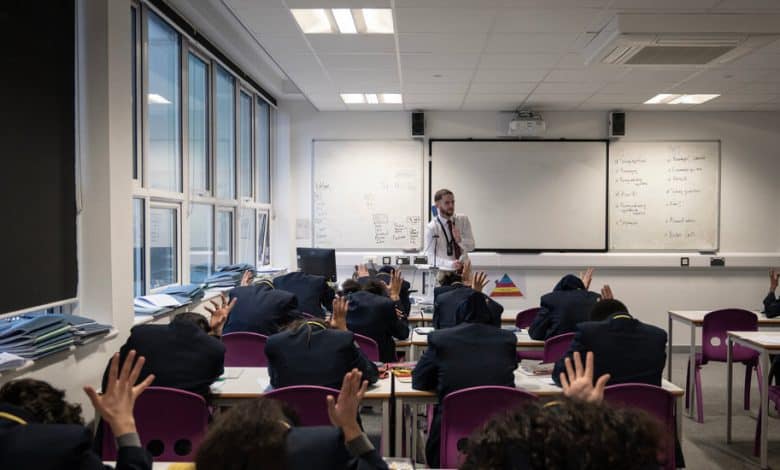‘You Can Hear a Pin Drop’: The Rise of Super Strict Schools in England

As the teacher started to count down, the students uncrossed their arms and bowed their heads, completing the exercise in a flash.
“Three. Two. One,” the teacher said. Pens across the room went down and all eyes shot back to the teacher. Under a policy called “Slant” (Sit up, Lean forward, Ask and answer questions, Nod your head and Track the speaker) the students, aged 11 and 12, were barred from looking away.
When a digital bell beeped (traditional clocks are “not precise enough,” the principal said) the students walked quickly and silently to the cafeteria in a single line. There they yelled a poem — Ozymandias, by Percy Bysshe Shelley — in unison, then ate for 13 minutes as they discussed that day’s mandatory lunch topic: how to survive a superintelligent killer snail.
In the decade since the Michaela Community School opened in northwest London, the publicly funded but independently run secondary school has emerged as a leader of a movement convinced that children from disadvantaged backgrounds need strict discipline, rote learning and controlled environments to succeed.
“How do those who come from poor backgrounds make a success of their lives? Well, they have to work harder,” said the principal, Katharine Birbalsingh, who has a cardboard cutout of Russell Crowe in Gladiator in her office with the quote “Hold the Line.” In her social media profiles, she proclaims herself “Britain’s Strictest Headmistress.”
“What you need to do is pull the fence tight,” she added. “Children crave discipline.”
While some critics call Ms. Birbalsingh’s model oppressive, her school has the highest rate of academic progress in England, according to a government measure of the improvement pupils make between age 11 and 16, and its approach is becoming increasingly popular.
